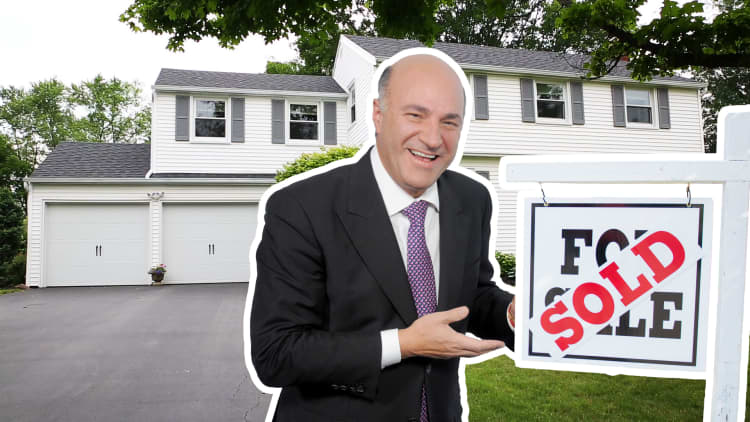Jyske Bank A/S, Denmark's third-largest bank, announced on Monday, Aug. 5, that it is offering 10-year mortgages at a rate of negative 0.5%.
Another Danish bank, Nordea Bank Abp, also said that it will begin offering 20-year fixed-rate mortgages with 0% interest, as well as 30-year mortgages at 0.5%, Bloomberg reports.
While a negative interest rate makes it sound like borrowers will be paid to take out a mortgage rather than pay the bank interest, the reality is more complicated. With banking fees, borrowers could still end up owing money on the loan, not earning it, Mikkel Høegh, a housing economist for Jyske Bank, says.
Plus, due to the short term of the loans offered by Jyske Bank, they aren't meant to finance an entire home purchase. They are intended to be supplemental loans that can be used for home repairs and upgrades or to pay off debts with higher rates, the bank says.
Negative rates in general are a sign that lenders are wary of where the markets are headed. Some banks are willing to take a smaller loss now by offering low or negative interest rates, rather than risking borrowers taking out higher interest loans that they won't be able to pay back in the future.
"It's an uncomfortable thought that there are investors who are willing to lend money for 30 years and get just 0.5% in return," Lise Nytoft Bergmann, chief analyst at Nordea's home finance unit in Denmark, told Bloomberg.
"It shows how scared investors are of the current situation in the financial markets, and that they expect it to take a very long time before things improve."
It's an uncomfortable thought that there are investors who are willing to lend money for 30 years and get just 0.5% in return.Lise Nytoft Bergmannchief analyst at Nordea's home finance unit
European countries first introduced negative rates more than five years ago as a short-term solution to jump-start their economies, the Wall Street Journal reports. However, many are still relying on them.
In theory, negative rates incentivize businesses to borrow money, then invest it back into the economy. That's because when one dollar enters the economy, it gets spent several times, the Journal explains.
Here's a simple example: Say you spend $1 at a local store. After taxes and other expenses, the owner will spend that $1 on something else outside of their own store. The process repeats again and again, so your initial purchase fuels multiple dollars' worth of economic activity.
"Policy makers hope negative rates will act as a sort of tax on holding money, encouraging those who have it to lend to spend it, increasing money's velocity," the Journal says.
However, negative interest rates can backfire: "With rates below zero on government securities and other risk-free assets, physical cash or even deposits in some bank accounts that don't charge interest become more attractive. In that case, people may hoard physical cash, slowing down the speed with which money moves along the economy."
Like this story? Subscribe to CNBC Make It on YouTube!
Don't miss: Mortgage rates are at a 3-year low—here are 3 questions to ask before you refinance



